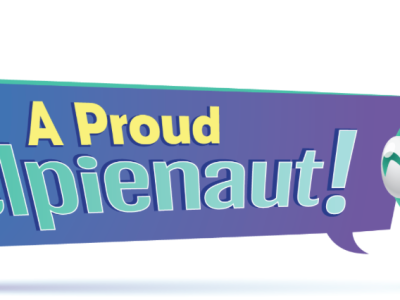Poetry Sunday: 'If I May Take Thy Hand' (A Modified Sestina)
When I was young and studly, like the great poetic master Percy Bysshe Shelley, I liked to play around with forms. Now, when I say "play around," what I mean is, I'd learn a form, study those who wrote in that form, and try to write a few of my own. When I got close enough to calling myself decent at that form, I'd modify it somewhat to see if I could challenge myself to write more lucidly. It was a game.
One of the forms that I took an interest in at one point is called a sestina.
What characterizes a sestina and makes it distinct from other forms is its strict adherence to six stanzas of six lines each where the last word of each line is repeated on a different line in following stanzas. There is no rhyme scheme but there is an ending envoi where all six end-words are used but only three wind up at the ends of the lines. It looks something like this:
- ABCDEF
- FAEBDC
- CFDABE
- ECBFAD
- DEACFB
- BDFECA
- (envoi) ECA or ACE
Each letter represents an end word. As you can see, the last word of each stanza becomes the end word of the first line on the next stanza. The other end words are shuffled about in a systematic fashion. The envoi may end with one of two different end-word patterns.
I have written a few sestinas over the years, but today's poem is not a sestina. Rather, it is based on the sestina but includes enough differences that it could be its own form. I have not given it a name.
Meet the Modified Sestina
For lack of a better term, I'll just call it a modified sestina. As you'll soon see, the modifications are beyond cosmetic. Firstly, there are only five stanzas, not six. Each line of each stanza contains an end word that rhymes with the jumbled corresponding line of the previous stanza in the following pattern:
- ABCDE
- ECDAB
- BDAEC
- CAEBD
- DEBCA
As with the sestina, each letter corresponds to an end word in the first stanza. A is the first line of the first stanza, B is the second line of the first stanza, and so on. However, instead of repeating the same word as in the sestina, this modified form utilizes a rhyme of each end-word.
Finally, the poem concludes with a tercet (three-line rhyme scheme) followed by a couplet (two-line rhyme scheme).
Sestinas were oftem poems of courtly love. I've decided to keep that flavor for the following poem. But there's one more thing to say about it. In addition to the end rhymes, which shift in pattern from stanza to stanza, there is also an internal rhyme scheme.
In this case, the first stanza follows the internal rhyming pattern of ababa. The second stanza follows with bcbcb. The third, cdcdc. Fourth: deded. And the fifth - efefe. The tercet and the couplet at the end of the poem use the rhyme scheme fff and aa, respectively.
This is rather complicated, so it helps to see the poem in action. But one final thing to understand about both the sestina and the modified form is there is no metrical pattern. How many syllables are in each line is of no consequence.
Why Should Poets Write In Form, And Why Invent New Ones?
Before I share the poem titled "If I May Take Thy Hand," allow me to share some thoughts on why I think writing in form is important, and why I think poets should challenge themselves to invent new forms.
First, form poetry is a challenge because it forces the poet to be selective in word choice as well as in musicality. Every poem, rhymed or not, has a rhythm. By writing in form poetry, with metrics and rhyme, the poet learns to listen to the music of the poem. Even unrhymed poetry has a musical style and tone that can help inform the reader about its content.
When I was in college, I wrote strictly in free verse. This was primarily because writing poetry was new to me and my poetry workshop instructors all used their platforms to introduce contemporary poets to young, impressionable minds (even mine). While I fed on this, and still admire many of those contemporary poets whose work I was first exposed to during those years, there was also a new movement in poetic circles called New Formalism. One of the astute members of that school, Dr. Frederick Turner, happened to be an adjunct professor where I was enrolled.
While I never took a course by Dr. Turner, I did, on one occasion, have an opportunity to share some of the poetry I was writing at the time. He praised some of it, criticized some of it, and then offered me this advice, "You should study form poetry and learn the craft of rhyme and meter. Even if you choose not to write in that style, you'll be a better poet." I took his advice, and he was right.
So why invent new forms? I think inventing is a skill of its own. While I am convinced that not everyone can be innovative--some people are and some people are not--creating new forms of poetry teaches the limits of language, and that is a very important lesson for anyone in any writing profession to learn. Language has its limits.
What do I mean by that? Well, try communicating with someone from a different culture than yours and explain to them something about your culture that is not present in theirs. You will soon find out, through that exercise, that there are some things language simply cannot do. And it's important to know that.
By understanding the limits of language and being particular about words and phrases as well as the music of a poem, or its rhythm, if you prefer, any poet worth a grain of salt can take any poem and improve upon it simply by fine tuning. I've done it thousands of times, and I know you can to.
Now, without much further ado, I give you "If I May Take Thy Hand."
If I May Take Thy Hand

Image from Pixabay.
If I could embrace thy hand like a close-fit glove
I'd lie upon thine arm and become for thee a cloth,
Soft as sugary sand, or encircle just one finger
And bestow thee with charm as I sprinkle my hope,
A simple band, upon thy skin so fair and clean.
I know thou art warm, like summer green,
And I wish thee would feel the poisonless stinger
Of my hovering swarm as it unwraps the rope
Of stainless steel from my bottled-up Love!
Forgive me, I mean no harm; but am wrought with wroth
For being the heel and wanting instead to be the broth
That feeds thy lips with kisses like dope:
Oh, but were I thy meal and thee my dove,
Thine heavenly sips would turn my soup to kerosene.
Imagined, not real, this dream of mine will linger
Forever like vice grips that bite the harbinger
And leave teeth marks on a cast iron stove.
Tap thy fingertips upon my brow so they may be seen,
Not heard, like sparks that fly when the mother moth
Yells her sarcastic quips at the bar of soap:
Are we a pair of larks? languished and brooding, or can we cope
With the losses we claim? I will be a post for thee to lean
On or one of many parks for thee to walk, or both—
Thou hast achieved thy graceful fame; but I remain the clinger
Who must catch the harks you hurl at me from above.
No matter, you are the picture and I the frame:
You are the named and I the name:
You are the fire while I still dream to be the flame.
I shall become whatsoever you demand;
If I could just get one glimpse of your perfect hand.



Review Me, Please
While you're here, check out the backside 5 (my five latest posts):
- Comedy Open Mic Round #28: My Adventures in Living in You-Toupee-Oh
- Crypto Digest: Liars, Outliers, and Hot Potato Stew
- Tell Me a Story Contest: Fenrir Awakes
- district0x: Creating a Network of Decentralized Markets
- Steem Monsters Fantasy Story Contest - Giant Roc:
Born of Wind, Strong as Stone


created and used by veterans
with permission from @guiltyparties


Wow, you are a plethora of information, I had to go back and read the poem twice, the first time through I wasn't paying that much attention to the words just the form. lol. It is beautiful and masterfully done.
Thank you very much.
very detailed, i'm glad i swung by as I've seen you in a few of my groups. so interesting regarding sestina as I've never heard the term before, thank you for sharing. i love shelley!!
Awesome. I'm glad you were exposed to a new form. It's a difficult one to master, but it's fun to play with.
@blockurator
Encouraging the imitation of form I think is a far easier way to initiate students to writing their own poetry. A natural step in learning complex grammar is by imitation, so why not somethin like poetic musicality. Nice post and great poetry again!
Thank you very much.
I think I rather like just enjoying the poem as it unfolds... :) than to know the technicalities behind it! Lol... But that is just 'lazy' me... Thank you for explaining it all though!
You're welcome. And I'm glad you enjoyed the poem. It's best to read the way you read.
Ohhh good... :)
Wow, this is a detailed and very well written explanation. Seems I have to do quite a lot of fine tuning with my poems before I am courageous enough to post them.
Thank you for giving me the chance to learn with your post.
Interesting post. I studied a bit of poetry during my school years but unfortunately my brain decided to bury all the info. :-P
Thanks. The brain tends to bury knowledge it isn't using. Maybe you should practice a little. Exercise those poetic muscles.
This is very well explained..
Beautiful article dear friend...
Thank you kindly.
You are welcome friend..
@blockurator upvoted this post via @poetsunit

Poetsunited - DISCORD - @poetsunited - witness upvote
Congratulations! This post has been upvoted from the communal account, @minnowsupport, by blockurator from the Minnow Support Project. It's a witness project run by aggroed, ausbitbank, teamsteem, someguy123, neoxian, followbtcnews, and netuoso. The goal is to help Steemit grow by supporting Minnows. Please find us at the Peace, Abundance, and Liberty Network (PALnet) Discord Channel. It's a completely public and open space to all members of the Steemit community who voluntarily choose to be there.
If you would like to delegate to the Minnow Support Project you can do so by clicking on the following links: 50SP, 100SP, 250SP, 500SP, 1000SP, 5000SP.
Be sure to leave at least 50SP undelegated on your account.
Congratulations! Your post has been selected as a daily Steemit truffle! It is listed on rank 22 of all contributions awarded today. You can find the TOP DAILY TRUFFLE PICKS HERE.
I upvoted your contribution because to my mind your post is at least 3 SBD worth and should receive 91 votes. It's now up to the lovely Steemit community to make this come true.
I am
TrufflePig, an Artificial Intelligence Bot that helps minnows and content curators using Machine Learning. If you are curious how I select content, you can find an explanation here!Have a nice day and sincerely yours,

TrufflePigSchweet!